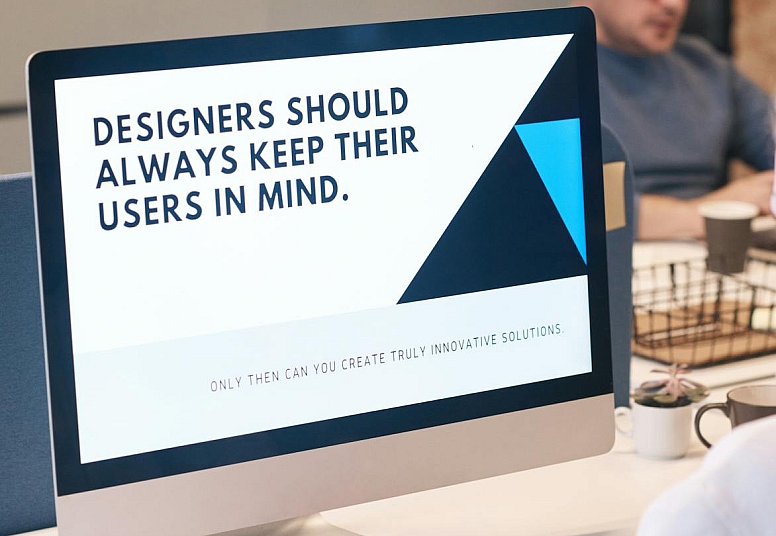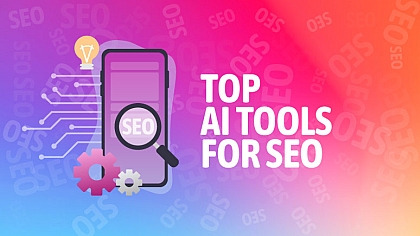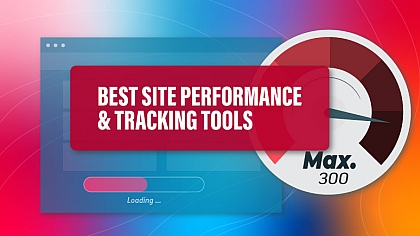
The Crucial Role of UI/UX Design in Today's Digital Era
In the fast-paced world of the internet, where attention spans are shorter than ever, the importance of UI/UX design cannot be overstated. User Interface (UI) and User Experience (UX) design have evolved to become the cornerstone of digital success. The journey from clunky interfaces to seamless experiences has transformed how we interact with technology.
The significance of prioritizing the user experience extends beyond aesthetics. It directly impacts conversion rates and customer retention. Studies show that 88% of online consumers are less likely to return to a site after a bad experience. In a world with abundant choices, users won't hesitate to switch to a competitor offering a smoother experience. This is the fundamental role of a white-label digital marketing agency. Retain your online dominance by offering a seamless user experience.
UI/UX and SEO are more intertwined than meets the eye. Google, the gatekeeper of online visibility, favours websites with user-friendly interfaces and seamless experiences. Mobile responsiveness has become a ranking factor, with Google emphasizing the importance of catering to the mobile audience. Websites that load quickly and provide a smooth navigation experience tend to rank higher in search results.
Understanding UI and UX Design
UI is the look and feel, the visual part of a digital product that users interact with. It's the buttons you click, the colours you see, and the overall design aesthetic. On the other hand, UX is a user's overall experience with a product, encompassing everything from usability and accessibility to the emotions elicited during interaction.
Now, what sets them apart? Think of UI as the face of a digital product and UX as the whole body – UI is what you see, and UX is how it all works together. While UI focuses on surface-level design, UX dives deeper into the entire user journey.
Importance of UI Design
UI is like the first impression of a website or an app – it's what catches your eye. Visually appealing and intuitive interfaces are crucial. A top white-label digital marketing agency offers a dedicated team of expert individuals in design and copywriting to help you design pages that convert. Think of your favourite apps or websites; chances are, part of what you love about them is the seamless, easy-on-the-eyes design.
Crafting a visually appealing UI isn't just about making things pretty; it's about guiding users effortlessly. A well-designed UI enhances user engagement and satisfaction by making navigation a breeze. From easily clickable buttons to a pleasing colour scheme, it all contributes to a positive user experience.
Impact on Digital Success
Conversion Rates
Alright, let's talk numbers. Conversion rates – it's the digital gold mine, and a well-designed UI/UX is the treasure map. Navigating from browsing to buying becomes a smooth journey when your website or app has a user-friendly design.
Now, let's dive into some real-life success stories. Have you ever heard of the mobile game Crossy Road? Their clever UI design contributed to a whopping 500 million downloads. It's not just about pretty graphics; it's about creating an interface that guides users effortlessly towards the desired action.
Customer Retention
Positive user experiences are the secret sauce for customer loyalty. Think about it – when was the last time you stuck with a service or product that frustrated you at every turn? The link between a positive user experience and customer loyalty is like a digital handshake; it seals the deal.
Creating a memorable user journey is the key to retaining customers. It's not just about the first visit; it's about making every interaction enjoyable. Amazon nails this – from their easy-to-navigate website to personalized recommendations based on your browsing history, they've mastered the art of keeping customers coming back.
Strategies for crafting a memorable user journey involve understanding your audience. Conduct surveys, gather feedback, and adapt. Starbucks does this well – their app not only allows for quick and easy ordering but also rewards users with points, creating a positive loop of engagement and loyalty.
In a world with abundant choices, users won't hesitate to switch to a competitor offering a smoother experience. Customer retention isn't just about keeping customers; it's about building a community of loyal users who not only stick around but become your brand advocates.
UI/UX and SEO
Mobile Responsiveness
In this mobile-first era, your digital presence better be a smooth operator on smartphones. Responsive design is the secret sauce here. It's not just about making things fit on a smaller screen; it's about crafting an experience that feels just as good on mobile as on desktop.
Why does it matter? Well, Google, the big player in the search game, loves mobile-friendly websites. They've made it clear that mobile-friendliness is a ranking factor. What does that mean for you? If your website isn't mobile-friendly, it might be playing hide and seek on search engine results. A responsive design ensures that your site is accessible and user-friendly, whether someone's scrolling on their phone during lunch or browsing on a laptop at home.
Page Load Speed:
Alright, picture this – you click on a link, and it takes forever to load. Frustrating, right? That's where UI/UX and page load speed do a little dance. The faster your website loads, the happier your users, and guess what? Google's a fan of speedy sites too.
Here's the connection: how your website is designed and structured directly affects its speed. From images to code, everything plays a role. It's not just about impatient users; slow-loading sites get the cold shoulder from search engines. Google even announced that page speed is a ranking factor.
Trends and Innovations
Dark Mode and Beyond
Let's shed some light on a trend that has taken the digital world by storm – Dark Mode. It's not just a cool aesthetic choice; it's a practical game-changer. Dark backgrounds reduce eye strain, especially in low-light conditions. Everyone's hopping on the dark mode train, from your favourite social media apps to operating systems.
But the innovation doesn't stop there. Beyond dark mode, designers are exploring new frontiers. Take neumorphism, for instance – it's like the next-level evolution of skeuomorphism, creating interfaces that mimic real-world objects. The goal is to make digital interactions feel more tactile and authentic.
AI in UX
Now, let's dive into the world of artificial intelligence (AI), making waves in the UX realm. It's not just about futuristic sci-fi scenarios; AI is here, and it's making our digital experiences smarter and more personalized.
Imagine a personal shopping assistant that knows your style better than you do. AI in UX is all about that. AI can predict preferences, tailor recommendations, and create a customized journey by analyzing user data. Netflix does this well. Have you ever noticed how the suggested shows are almost too spot-on? That's the magic of AI.
The integration of chatbots is another AI-driven innovation. These virtual assistants don't just answer queries; they learn from interactions, providing increasingly accurate and helpful responses over time. Companies like Facebook are leveraging chatbots to enhance user engagement and support.
In healthcare, AI is revolutionizing patient experiences. Apps like Ada Health use AI algorithms to analyze symptoms, providing users with personalized health insights. It's like having a doctor in your pocket, available 24/7.
As we peer into the future, one thing is crystal clear – prioritizing user experience is not a trend; it's a fundamental strategy for long-term success. Businesses and designers take note. The future isn't just about staying ahead; it's about creating a future where technology seamlessly integrates into our lives, making every interaction a delightful one.
So, here's to the future of UI/UX – a journey where the digital landscape becomes not just a canvas but an immersive experience waiting to be explored.














